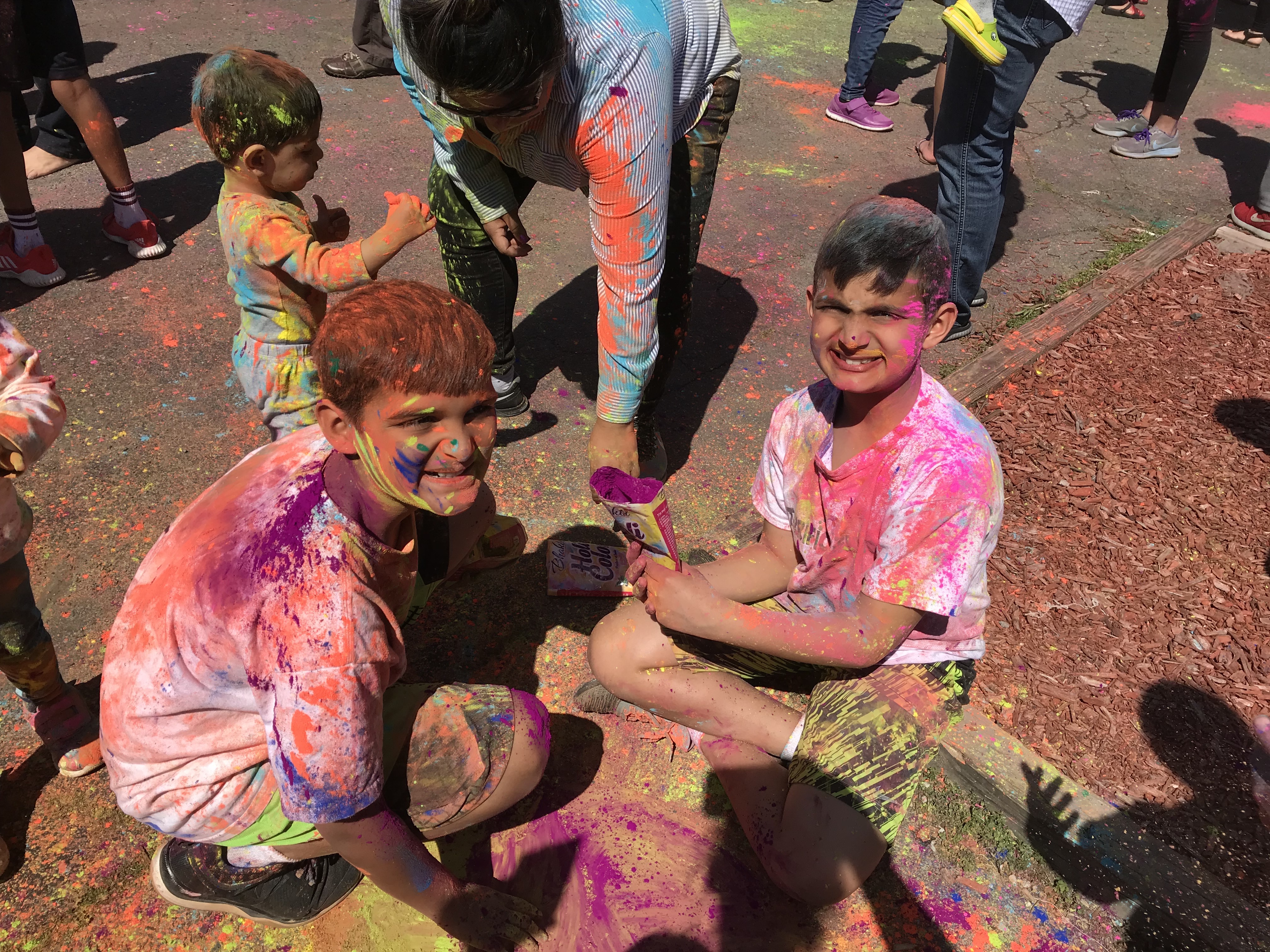Holi, a traditional Hindu festival which celebrates the beginning of spring as well as the triumph of good over evil, is celebrated this year on March 9th. Holi is best known around the world for the powder that revellers throw on each other, leaving festival-goers coated in color by the end of the day.
Although the festival originated in India and is still widely celebrated there as a religious festival, it has been adopted in many places around the world.
When is Holi?
Every year the festival celebrations begin on the evening of the full moon that comes in 'Phalguna' (between the end of February and the middle of March), carrying on into the next day. This year, it begins on March 9th, the first of two full moons in March.
The first evening is known as Holika Dahan, or Chhoti Holi. Festival-goers traditionally gather around a bonfire to celebrate the victory of good over evil. They perform religious rituals, which include prayers that any evil inside of them is destroyed.
The following day is called Holi, or Rangwali Holi. This is when the famous colourful powders are thrown.
What is the history behind Holi?
Holi's different celebrations come from various Hindu legends, although one is widely believed to be the most likely origin.
In it, the celebration's name refers to Holika, the sister of the Hindu demon king Hiranyakashipu. The demon king was granted immortality with five powers:
- He could be killed by neither animals nor humans
- He could be killed neither indoors nor outdoors
- He could be killed neither during the day nor at night
- He could be killed on neither land, water nor air
- He could be killed by neither projectile nor handheld weapons
When his immortality turned him evil and he began to kill anyone who disobeyed him, his son, Prahlad, decided to kill him. When the king found out, he asked his sister Holika for help; in their plan she would wear a cloak which stopped her from being harmed by fire and take Prahlad into a bonfire with her.
However the cloak flew from Holika's shoulders while she was in the fire and covered Prahlad; he was protected but she burnt to death.
In the legend, the Lord Vishnu then appeared to kill Hiranyakashipu by sidestepping his five powers.
He took the form of Narasimha, who was half-human and half-lion; he met him on a doorstep, which is neither indoors nor outdoors; he appeared at dusk, which is neither daylight nor dusk; he placed his father on his lap, which is neither land, water nor air; and he attacked him with his lion claws, which are neither projectile nor handheld weapons.
While Hiranyakashipu and Holika came to represent evil, Vishnu and Prahlad came to represent good. The story shows the victory of good over evil, which is why it is tied to the festival.
The other most popular origin of the festival is the legend of Krishna. The Hindu deity, embarrased by his dark blue skin, told his mother he was worried his love Radha would not accept him. She told him to color Radha's face whatever color he wanted; when he did, they became a couple.

The Colorful Part of the Holi Festival
The colored powder thrown on the second day of the festival comes from the legend of Krishna. Anyone at Holi is fair game to be covered in the perfumed powder as a celebration of Krishna and Radha's love, regardless of age or social status. The powder also signifies the coming of spring and all the new colors it brings to nature.
Historically, the gulal was made of turmeric, paste and flower extracts, but today synthetic versions are used.
The four main powder colors are used to represent different things. Red reflects love and fertility, blue is the color of Krishna, yellow is the color of turmeric and green symbolizes spring and new beginnings.
Holi is referred to as the festival of colors and is one of the most fun holidays of the year for Hindus. Many have adopted their own version of Holi by having color runs and other activities that are similar. Have fun and throw some colors on your friends!
Happy Holi!!
Bejal Mehta is a contributor to Union County Macaroni Kid and the owner of Cookie Amor in Weddington, NC. Bejal is a Macaroni Mom of 2 amazing boys who attend Antioch Elementary and Weddington Middle School. She was born in Cincinnati, OH and has lived in Weddington since 2012.


